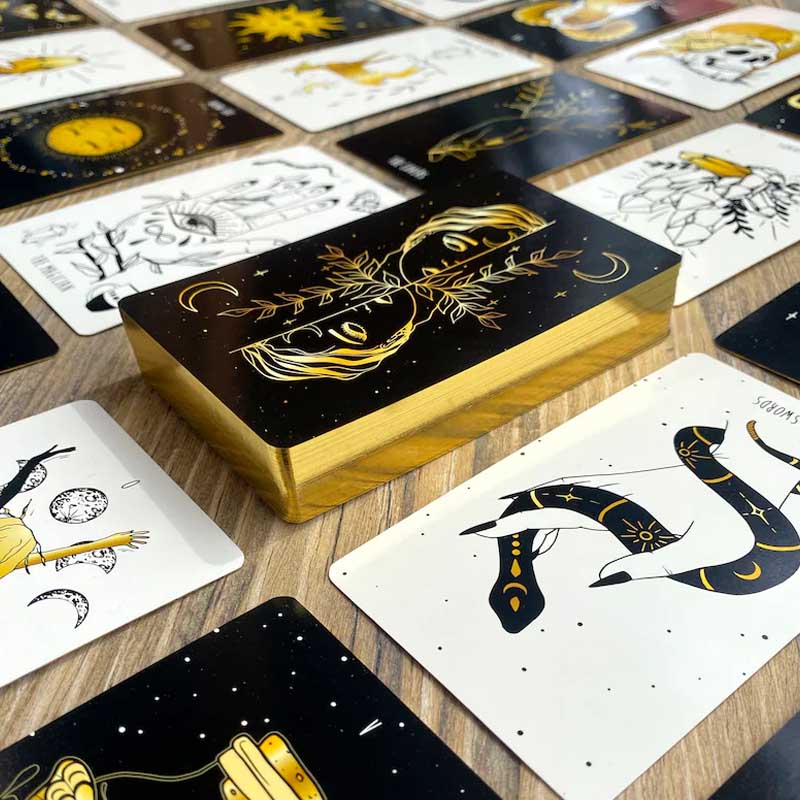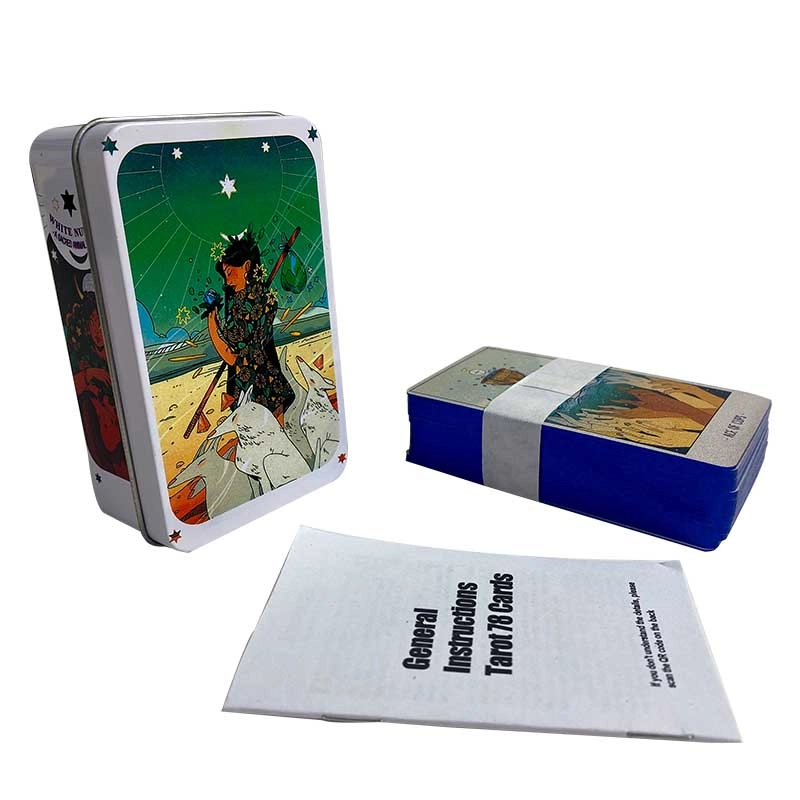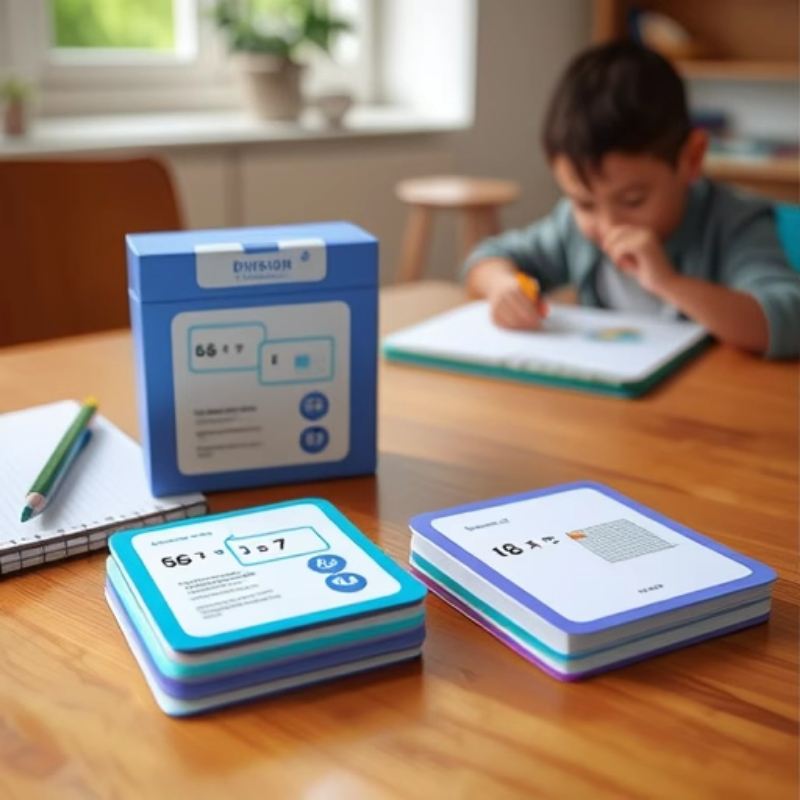
Essential Components of a Custom Deck
Designing a custom deck can be tricky and requires you to understand the important elements that contribute to an appealing deck. They are the keys to the design and function of all the cards that make them up. Of course, each individual part is vital to the cards as a whole.
Card Dimensions and Materials
You need know the specifications and materials of a customised deck of cards. Normal playing cards are directed at 2.5 inches by 3.5 inches, but different sizes can be examined to fit your specific needs or imaginative vision. But equally important is the material used; a nice quality stock makes for a constructed card that’s easy to handle. Plastic-coated paper provides more durability and flexibility, while also being more costly, as well as finer linen finishes.
Designing Face Cards, Numbers, and Suits
Face cards, numbers & suits are the true essence of any deck. Creating these elements requires a balance of creativity and function. Face cards can be illustrated in a way that aligns with the design style or overall character of the brand. Clear and numbered cards are essential for identifying easily when the game starts. Though players should recognize the traditional suits of hearts, diamonds, clubs, and spades, there is still plenty of room for creatively rendering the suits.
Packaging and Presentation
The packaging and presentation of a custom deck are just as important as the cards themselves. A good box protects your cards but also represents your theme or brand. Use something durable such as heavy cardboard or a metal tin.
The Design Process: From Concept to Creation
Designing a custom deck involves multiple stages from initial ideas to final production. Understanding this process is key to creating a cohesive and visually appealing product.

Initial Conceptualization and Theme Development
Think over the idea for a custom pack of cards It can derived from past events, cultural patterns, individual tales, and so forth. Creating a solid theme gives a purpose for future design decisions, aligning all the card pieces. If you already have a good theme in mind it’s always better to have a direction for further design decisions as well, because all the card elements should have the same style.
Digital Tools and Software for Design
The use of digital tools serves as a means to create those card designs into a form of existence. Tools like Adobe Illustrator or Photoshop give you control over elements like graphics, color, and typography. They provide templates for card layouts and help with what each element will look like on the final product.
Collaborating with Printers and Manufacturers
Finally, once designs are locked, working with printers and manufacturers is key to getting your vision realized in the physical world. Pick partners like Suba, preferably with custom deck experience and who know the techniques (e.g., color matching, material tailoring, etc.). Communication during this phase is critical to guiding our focus and can help avoid expensive pitfalls with the timely delivery of quality decks.
By following these steps, you will have a beautiful custom deck of personalized cards in your hands that will fulfill your design goals and become a special piece in either a collection or at a table. If you follow these steps carefully, you will end up with a beautiful custom deck that fits the design that you want it to have and that also can hold its own in any collection or game.
Marketing and Selling Your Custom Decks
After designing and manufacturing your own custom pack of playing cards, the next step is to learn how to better market and sell your work. The Strong audience, smart pricing for your product, and suitable distribution channels. It involves having a solid audience, knowing how much to sell your product for, and other potential distribution channels.
Building an Audience through Social Media
Social media is an essential way to attract your target audience and people who are interested in your custom deck of cards. Visually driven products work well on platforms like Instagram, Pinterest, and TikTok. Engage with potential customers and make a community spread-wide news on your deck by posting quality images and videos of your deck.
Think about shooting content that showcases what is unique to your deck like behind-the-scenes content or some game-play. Partnering with others in the gaming or art communities like influencers or content creators can also extend your reach. Interactive comments, stories of your fans and even live sessions create a link with the audience making them loyal to your brand.
Pricing Strategies and Distribution Channels
Setting an appropriate price custom deck is about matching production price with perceived value. By looking into the market for comparable products, you can see how others price such items to know what would be a competitive price. By offering limited editions or special features, one can justifiably raise prices while encouraging a feeling of exclusivity. This approach can justify a higher price point while instilling an air of exclusivity by offering limited editions or special features.
Distribution channels determine how your product will reach the end user. Amazon will give you a wider reach, while niche platforms dedicated to gamers or art lovers may attract a more focused audience. Also, try moving on through a specific site to have more effective branding, and customer treatment.
Beyond Traditional Playing Cards: Exploring Other Products by Suba
Suba, a renowned brand, goes beyond traditional playing cards to offer a diverse range of products. You can expand beyond traditional playing cards to open new avenues for creativity and revenue generation. Exploring diverse products allows you to leverage existing designs while reaching different market segments.
Tarot Card Game Variations
Tarot cards have long been recognized as a captivating means to explore new markets. The allure and symbolic nature of tarot decks have attracted both collectors and spiritual practitioners for centuries. While tarot variations typically draw upon traditional archetypes, many decks incorporate modern themes or personalized artwork. This fusion of tradition and innovation adds a unique touch to each deck, making them even more appealing to a diverse audience. Suba, a renowned tarot card manufacturer, understands the importance of this balance and offers a wide range of beautifully designed decks that cater to different tastes and preferences. Whether for personal use or as a collector’s item, Suba tarot cards continue to captivate individuals seeking spiritual guidance or artistic expression.









